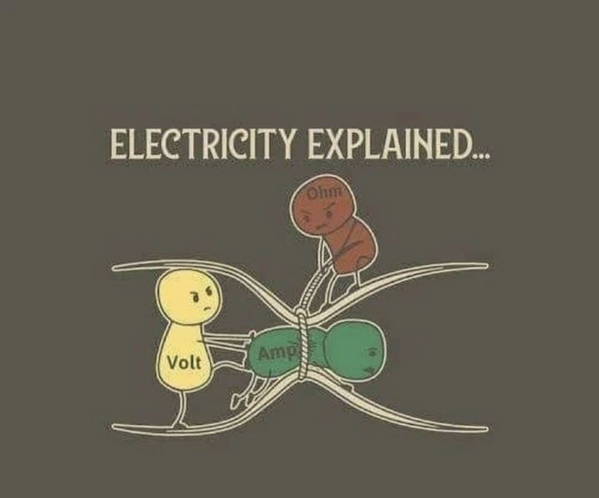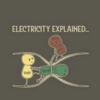Like I said Rob, I KNOW that it's needed, but what purpose does it serve? Also as I said, "completing the circuit" is not quite a good enough answer for my friend
Well, "completing the circuit" is just shorthand for what's actually going on. Here's my thumbnail sketch FWIW (based on early 20th century conventions, and ignoring quarks and all the fancy stuff underlying the somewhat simplified version detailed below!):
I'm going to assume your friend knows that all atoms are comprised of protons and neutrons in the nucleus, and electrons in 'shells' or levels around the outside, with protons having a positive charge, and electrons having an equal negative charge (neutrons have no charge). At rest, each atom has an equal number of protons and electrons, and thus is electrically neutral. However, electrons in the outer shell can sometimes be temporarily knocked loose by outside forces, or free electrons temporarily captured by a previously neutral atom (since each 'shell' has a preferred number of electrons, and will more easily lose or gain one or more electron to match that preference, even without a matching proton in the nucleus). Materials that can easily lose or gain electrons are called "conductors" (metals, mostly), while those that resist exchanging electrons are classified as "insulators". "Voltage" is a measure of any force encouraging the free electrons to migrate in a given direction (or for the "holes" left by loss of the electrons to migrate in the opposite direction). "Current" is a measure of the volume of flow of the free electrons in a given direction (or of the "holes" going in the opposite direction). "Resistance" is the measure of "friction" to that flow of electrons/holes through the material.
So, to get back to the friend's question: to allow the electrons to continue to flow, there must be a return path for them to follow to get back to the power source (they can *temporarily* flow to queue up in one side of a capacitor, but eventually they will need a return path to do much of anything useful over time). It is the *flow* of those electrons that does the actual work, since power (measured in watts) equals the pressure (in volts) times the volume of flow (in amps), so if there's no flow possible because of an open circuit, there's no power being delivered to any connected part even if there's a measurable potential along the single wire from the source, unless and until a return path is provided.
Dunno if this simplified description will help or just confuse things further, but I generally find a rough-and-ready understanding of what's going at the atomic and sub-atomic level helpful in making sense of what's going on in the layout's electrical and electronic circuits . . . especially when you get into the sometimes weird semiconductor world! 






